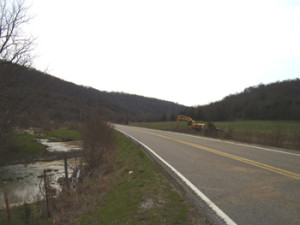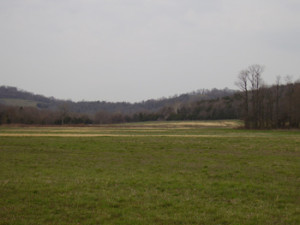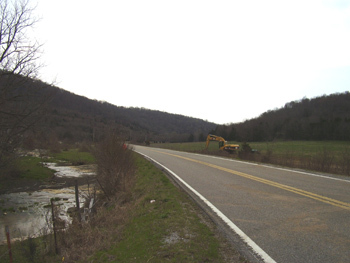The Battle at Liberty Gap, June 24-26, 1863, occurred 3.5 miles north of Bell Buckle in Bedford and Rutherford Counties, between units of the Confederate Army of Tennessee under General Braxton Bragg, and units of the Union Army of the Cumberland under Major General William S. Rosecrans. Liberty Gap was one of several gaps in the Highland Rim which were attacked by the Union army as part of the Tullahoma campaign. The capture of these gaps resulted in the retreat of General Bragg’s army from the valley of the Duck River and the abandonment of Middle Tennessee to the Union army.
The battle began when Rosecrans advanced his army south from Murfreesboro on June 24, 1863, and sent Brigadier General Richard Johnson’s division down Liberty Pike to capture the gap, defended by two Arkansas regiments of Brigadier General St. John R. Liddell’s brigade on the gap’s north slopes. They briefly halted the advance of the Union troops. Outnumbered and outflanked, Liddell’s men retreated south and the fighting halted at nightfall. Johnson’s Division advanced through the gap taking positions around the Clark house and Liberty Church. Throughout much of the next day there was little action at Liberty Gap. The Union’s capture of the gap alarmed Confederate General William Hardee who then instructed Confederate Major General Patrick Cleburne to send the rest of Liddell’s brigade to the gap to push back the Union forces. They encountered Union brigades which gradually pushed the outnumbered Confederate regiments back almost a mile. Liddell’s brigade retreated to a line of hills just south of Wartrace Creek and repulsed a Union attack. The next day additional Confederate forces advanced but no major action occurred, despite constant skirmishing.
 (AT RIGHT: The looming heights marking the entrance to Liberty gap must have appeared imposing to Union Troops approaching along Liberty Pike.)
(AT RIGHT: The looming heights marking the entrance to Liberty gap must have appeared imposing to Union Troops approaching along Liberty Pike.)
When Bragg received word of the collapse of his right flank, he ordered his entire army to withdraw south of the Duck River. With his northern flank exposed and Union cavalry romping through his route of retreat, Bragg turned his army to the south and raced for Chattanooga, which he reached on July 4th. In eleven days, and at a cost of only 570 casualties, Rosecrans had driven all southern forces south of the Tennessee River. Bragg himself would admit, “I am utterly outdone…This is a great disaster.”
The Liberty Gap Battlefield, composed of steep wooded hillsides and cultivated fields, continues to reflect its historic 1860s landscape. Two dwellings, present in June of 1863; the Clark House and the Granville Pearson House are still on the approximate 2,500 acre property. The historic and strategic Liberty Pike, once connecting the railroad communities of Christiana and Bell Buckle extends through the gap. The Pike was improved as a toll turnpike eventually widened and paved in the early 1960’s as State Route 269.
 There is no public access to this privately-owned property.
There is no public access to this privately-owned property.
(AT RIGHT: Liddell’s Confederate Brigade launched an unsuccessful counterattack across these fields.)

